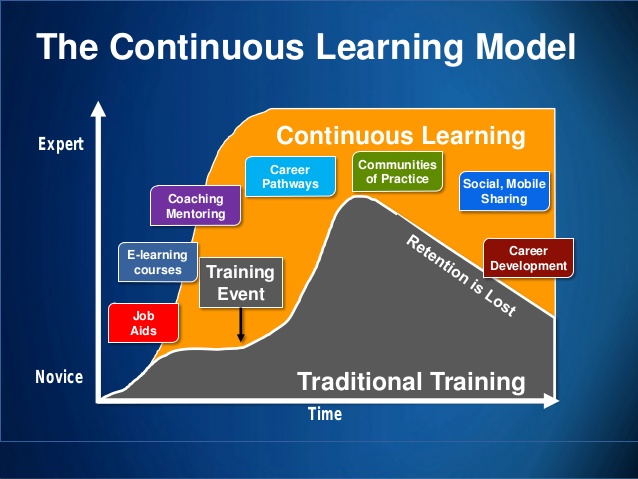26 February 2020

Continuous Learning (Bonus Blog)
In today’s highly competitive market place it has become essential that individuals remain current when it comes to learning. With new technologies advancing our market places daily, companies that are not continuously educating their employees on the latest technological advances will no doubt find themselves lagging behind their competition that do provide ongoing continuous learning for their employees.
In this blog, we will briefly outline the importance of ongoing learning from onboarding to ongoing employee training. Much like a winning sports team, employees need to be constantly coached and educated on the latest technological plays. The goal here is to not only find a solution to current technological advancements in a timely manner but also to identify a source like HubSpot Academy where individuals can stay current on their own time. We here at Nexonta Technologies use HubSpot Academy as a continuous learning tool and we require all of our employees to complete at least one HubSpot Academy Certification Course every quarter.
Why is continuous learning important for organizations?
Staying competitive in today’s global marketplace means that organizations need to be innovative, adaptive, and ever-changing. Achieving this depends on the skill and knowledge of the workforce. But how do you get this kind of workforce to begin with?
To innovate, to try a new process, or to do something new all requires learning.
People need to learn new knowledge or skills in order to see things in a new light and take that next leap. When organizations do not support a continual process of learning, innovation does not happen, processes remain unchanged, and nothing new is ever accomplished.
Employees need to be able to challenge themselves in order to obtain new knowledge, ideas, and skills. Learning needs to be on a flexible, on-demand and continual basis in order to contribute this kind of cutting-edge performance.
Creating a learning culture within the organization is an effective way to improve performance and innovation, as mentioned earlier, but also employee satisfaction and retention. Here’s why:
1. Knowledge is power – The more employees know and the more they can do, the more they can contribute to the organization.
2. More cost effective – Investing in the development of employees is less expensive than rehiring and retraining new employees.
3. Show that employees are valued – Support of continuous learning indicates that employees are worth the investment and that the organization is genuine about employee career development.
Continuously updating knowledge or skills can help an employee in both their professional life and personal life for a number of reasons. Here’s why:
1. Top Performer – Developing new skills and knowledge can increase personal performance or competence on the job.
2. Career development – Additional training, education, or skill development can help achieve goals for those pursuing a career path or wanting to rotate into a new position.
3. Licenses or Certifications – Pursuing additional learning is also important for those employees who need to obtain or update professional licenses or certifications.
4. Promotions or incentives – Spending time to learn a new skill or obtain new knowledge can benefit work performance and influence future promotion or financial incentives.
5. Personal enrichment – Often a person’s interests extend beyond the job they do on a daily basis. Pursuing extracurricular interests can lead to insight and developments that open the door to new, future opportunities.
6. Stay marketable – Staying current in the trends and advances of one’s profession can help an employee stay marketable in their profession should anything change.
On a personal level, the introduction of computers made us rethink how we communicate with people and allowed us to keep in touch with people across the globe with just the click of a button.
On an individual level, continuous learning is defined by the practices the individual carries out daily in order to continue increasing knowledge. For example:
• Asking for help when something is not understood
• Observing more experienced employees at work
• Trying new ways of doing things and exploring alternative methods
• Practicing what has been learned already
• Finding ways to improve such as taking up training programs or online seminars outside of work
In the organization, continuous learning has to do with shaping a team to adapt to changes in that particular business; from onboarding which is the action or process of integrating a new employee into an organization. Once the initial onboarding is complete, continue to offer new hires and existing employees relevant training and development opportunities. Knowledge is key to any successful business but it has also become essential for any business that wants to survive in today’s rapidly changing market place.
Source:
https://www.valamis.com/hub/continuous-learning
https://www.talentlms.com/elearning/continuous-learning



